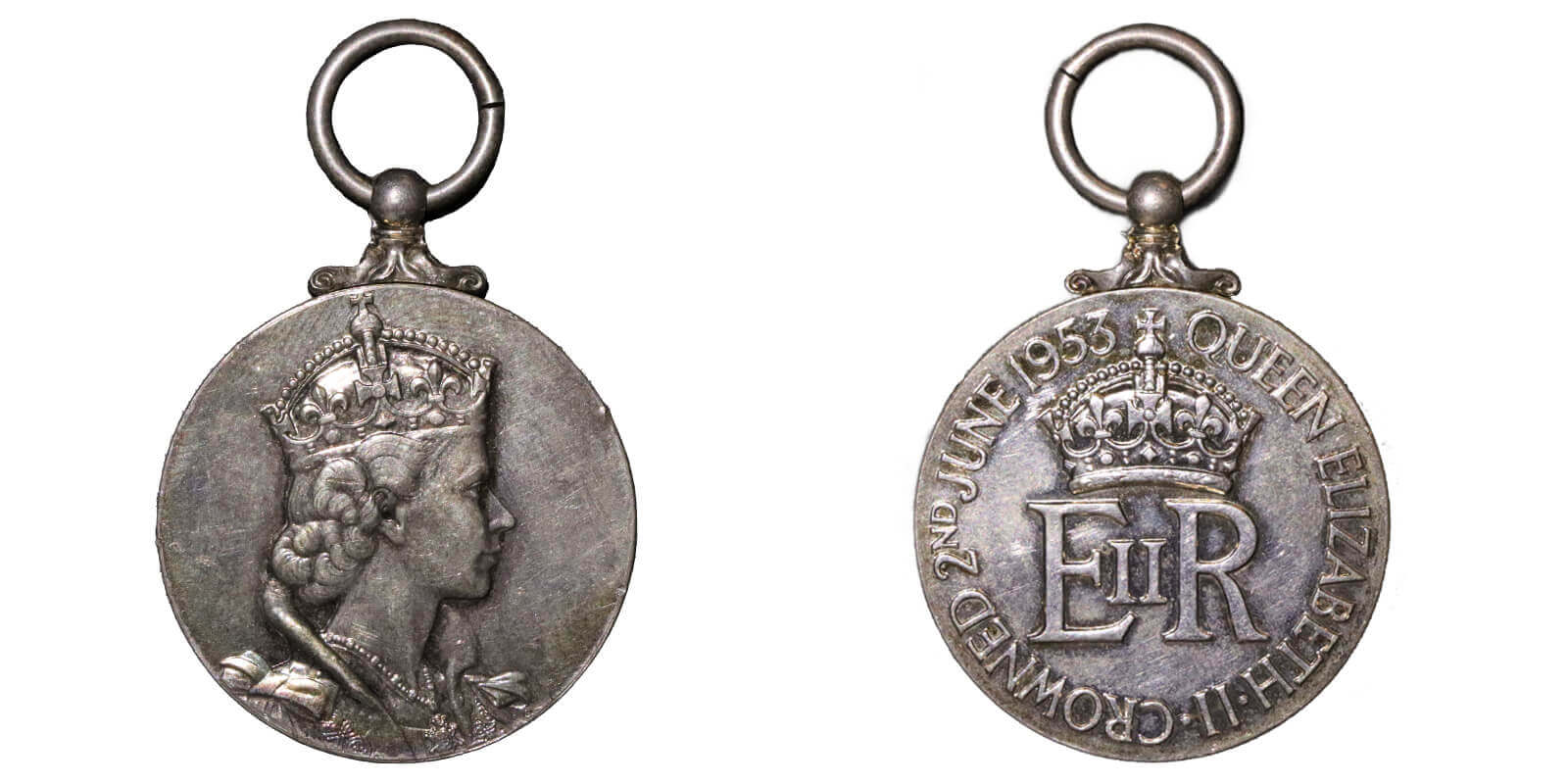Medals for coronations
Medals have been produced for Coronations since the reign of Edward VI (1547-53) and were, traditionally, distributed amongst the audience at Westminster Abbey. Accounts from numerous Coronations, including William IV and Queen Victoria in the 19th century, tell of medals being thrown amongst the crowd, often causing disorderly scenes as people scrambled and tussled with one another to get their hands on one.
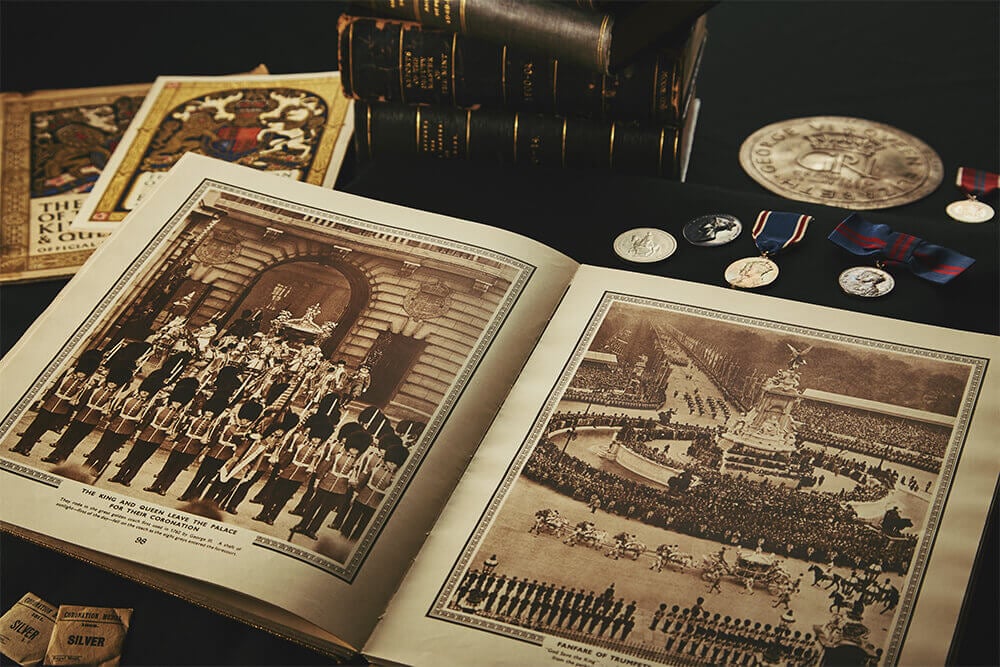
Such commemorative medals are still produced today, in addition to official medals which are worn with a ribbon and given to, among others, members of the armed forces, the Royal Household and those in the emergency services.
James I
James I coronation medals were issued only as small silver pieces, issued in an unknown number. The reverse features a heraldic representation of a crowned lion. The inscription describes him as “James I, Caesar Augustus of Britain: Caesar the heir of the Caesars”. This can be read as drawing upon traditions of the Holy Roman Emperors, who described themselves as Caesar, it is also a result of political process. James I was, at time of his coronation, King of Scotland and King of England. It was his desire to be proclaimed King of Great Britain, in a show of unification, but this would require assent of Parliament. It was, therefore, not possible for him to refer to himself as “King” of Britain at the time of his coronation, perhaps resulting in this reference to an Emperor instead.
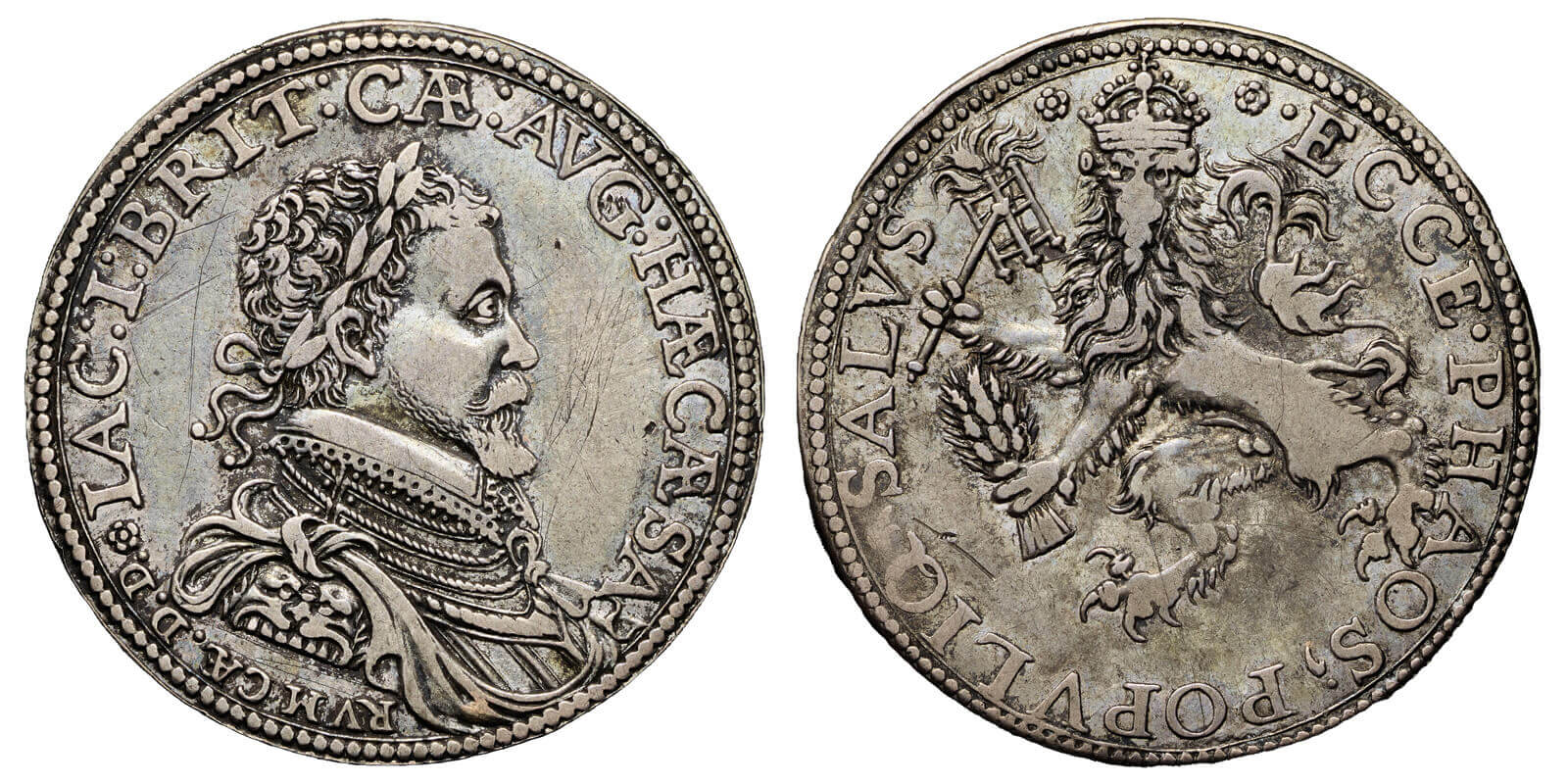
Charles I
Charles I’s coronation medal was designed by the Frenchman Nicholas Briot, who had impressed Charles with his work and who had supported Charles during the Civil War. The reverse, featuring an arm holding a sword, bears an inscription in Latin translating as “until peace be restored upon earth”.
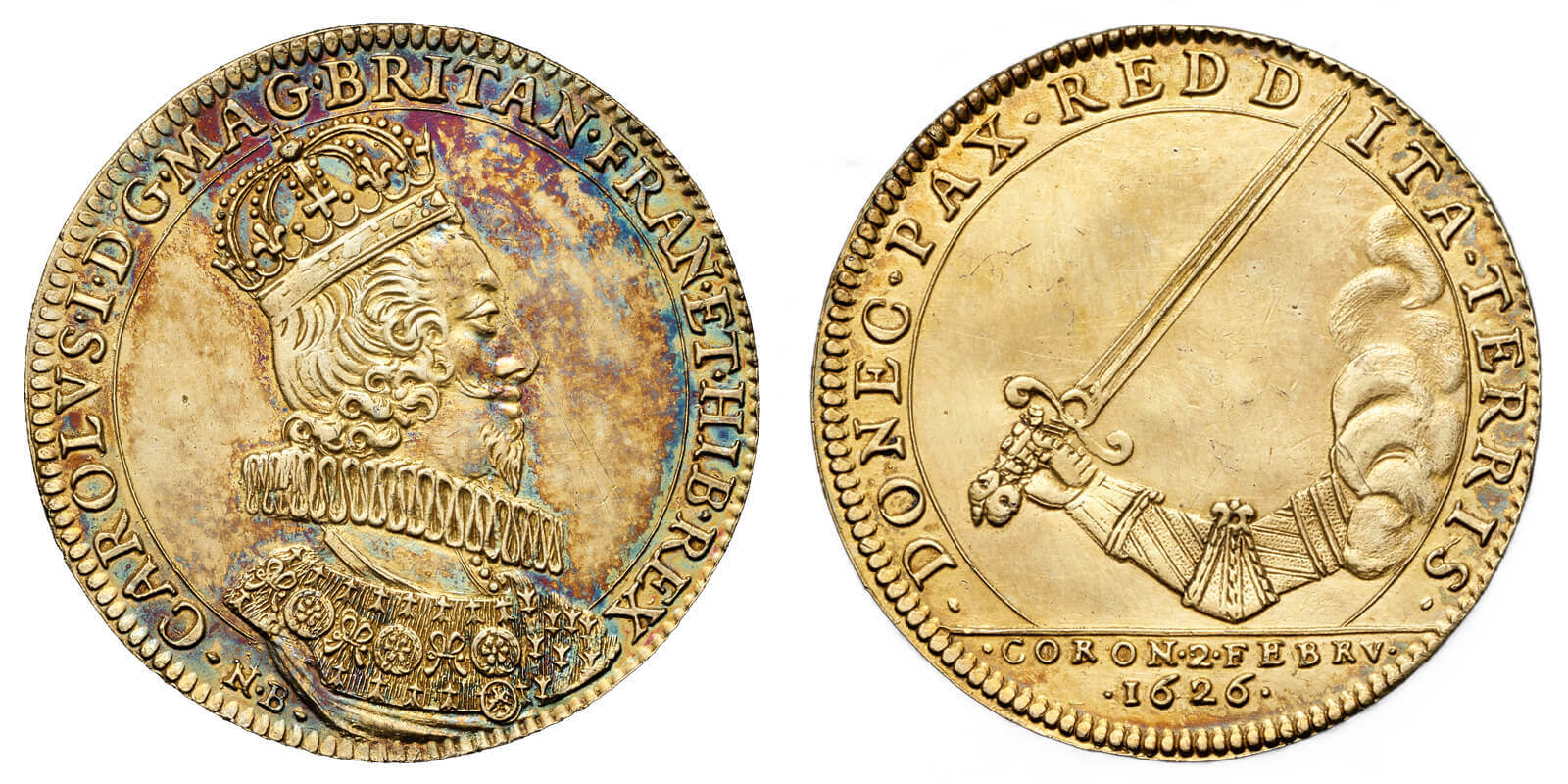
Charles II
Charles II’s coronation medal features on the reverse an enthroned portrait of Charles, perhaps intended to heal divisions following earlier political conflicts. Above the portrait a dove of peace hovers, placing the crown upon his head, with an inscription translating as “Sent to support a fallen age”.
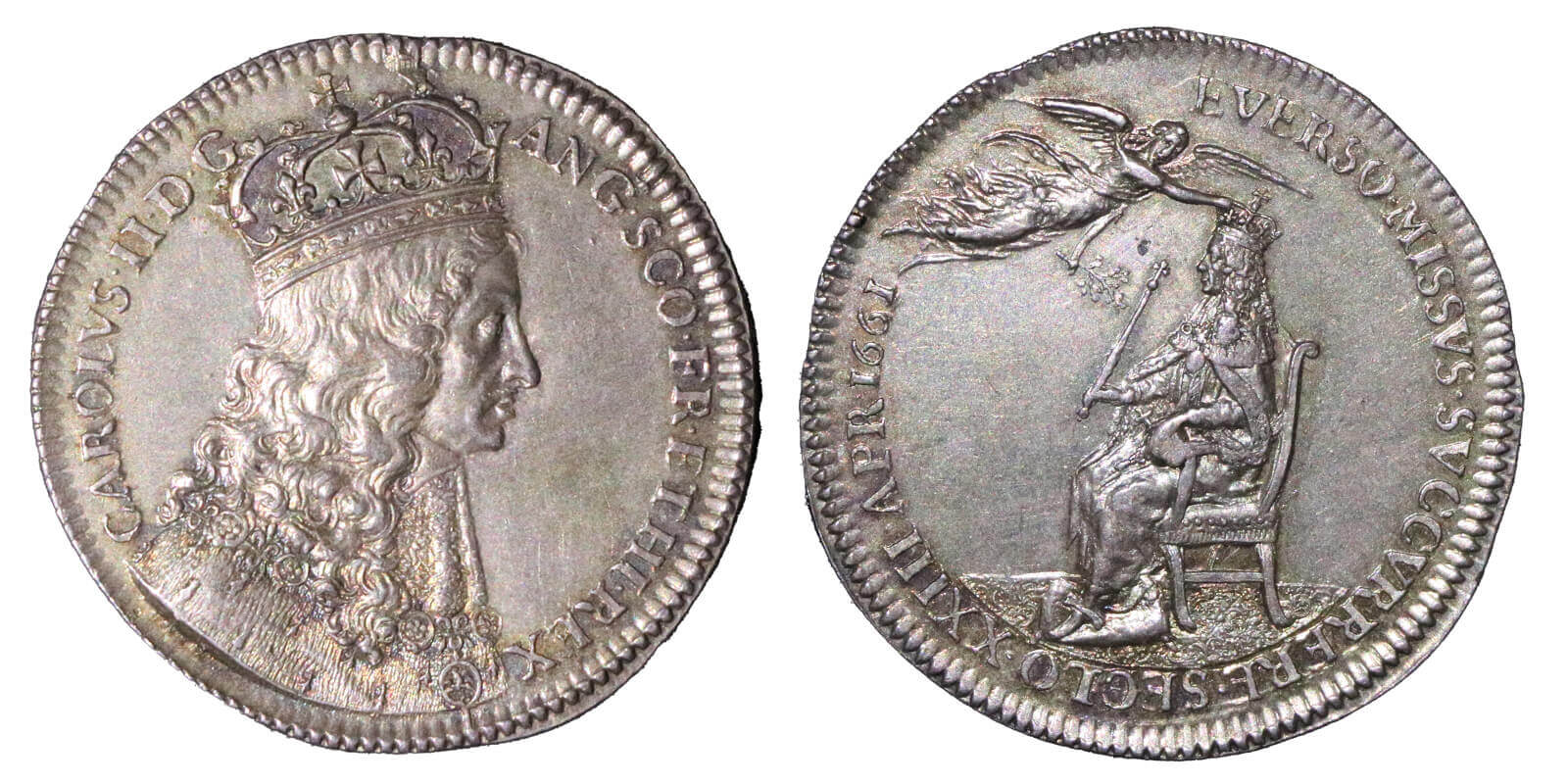
James II
The reverse of James II’s coronation medal is a wreath, symbolising the victor’s crown, above which the royal crown is held aloft by a hand from heaven. As with so many medals and inscriptions from the period, the scene can be read as a reference to the political convulsions of the era.
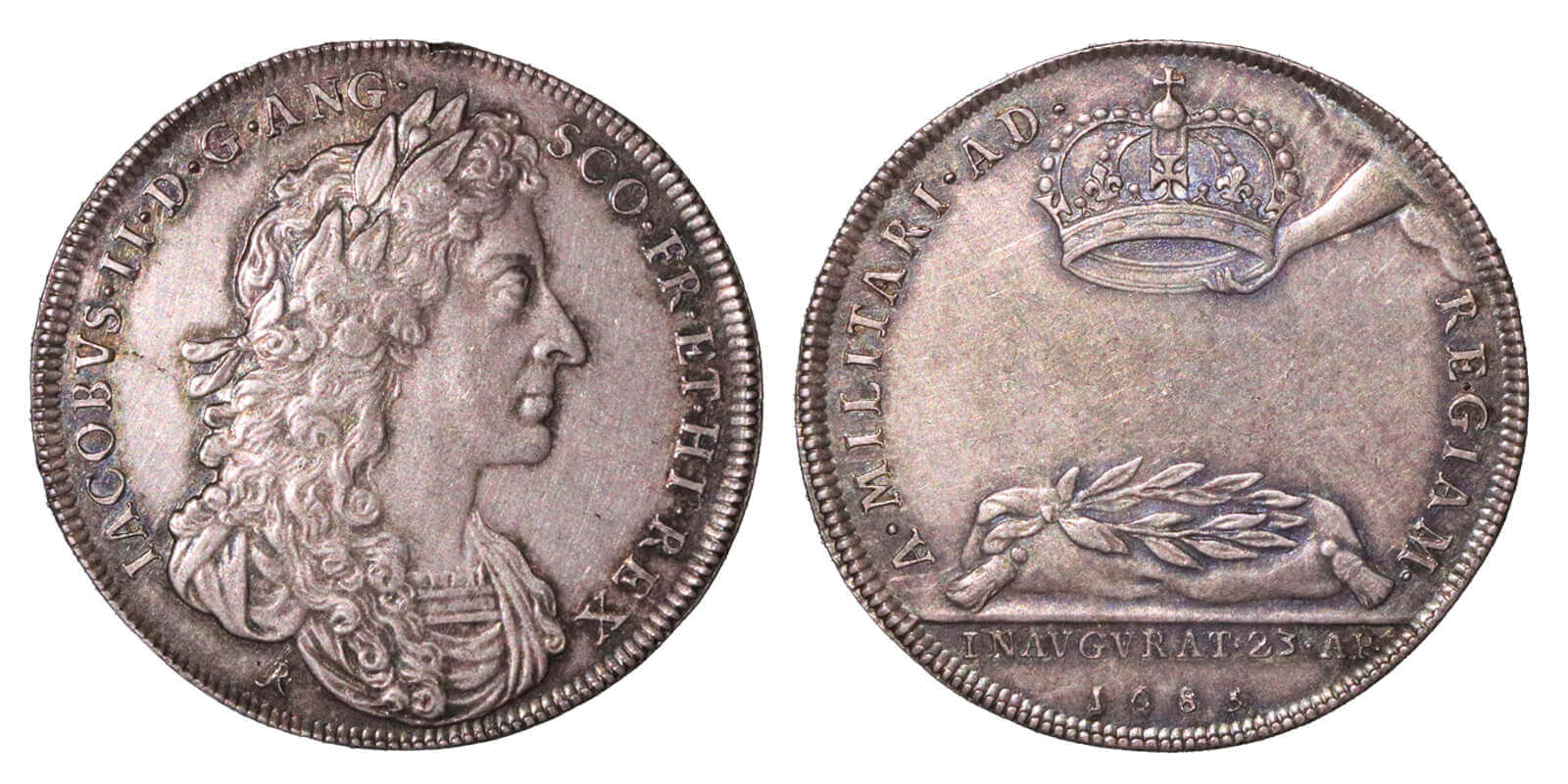
William and Mary
The two figures are, remarkably simply, described on their coronation medal as “King and Queen” (REX ET REGINA), perhaps the simplest solution to an unusual constitutional situation in which they had been offered the English throne but not the Scottish one until a month later. Styling the titles as anything more specific, including or excluding England, Scotland, or Great Britain, may have been technically incorrect, and could have risked causing offense.
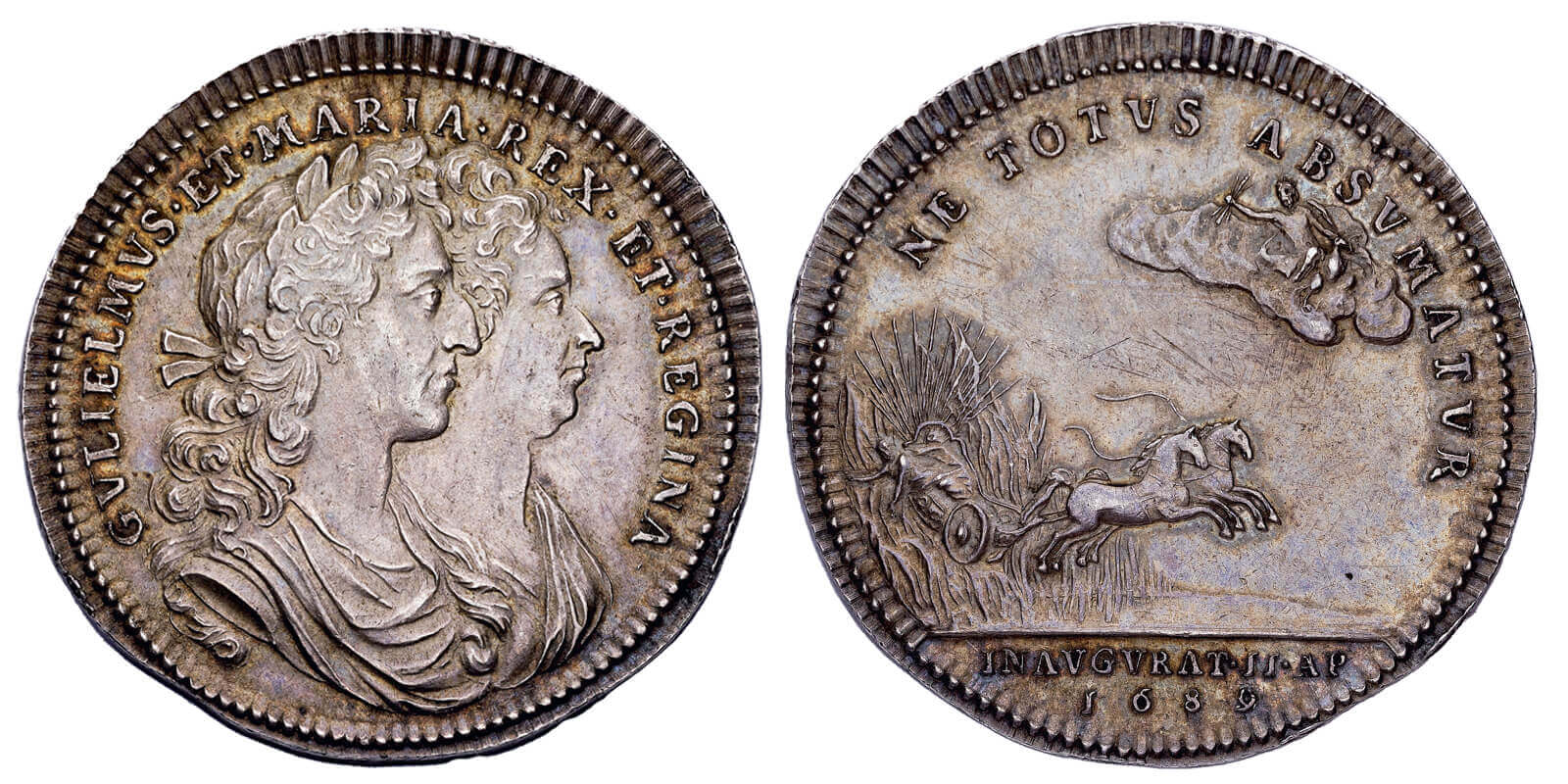
Anne
Anne’s coronation medal was believed to be the work of medallist John Croker, who was appointed Chief Engraver of the Royal Mint in 1705, though recent research has led to the credible suggestion that Isaac Newton, Master of the Mint from 1699-1727, was responsible for the design. Croker’s appointment required an Act of Parliament naturalising him as a citizen, the post being unavailable to those who had been born abroad. The time allowed for designing and striking this medal was very brief, with the Privy Council ordering the preparation of designs on 29 March 1702, for a coronation which took place on 23 April of that same year. The medal was struck on 17 April 1702, just three weeks from the Privy Council’s original order.
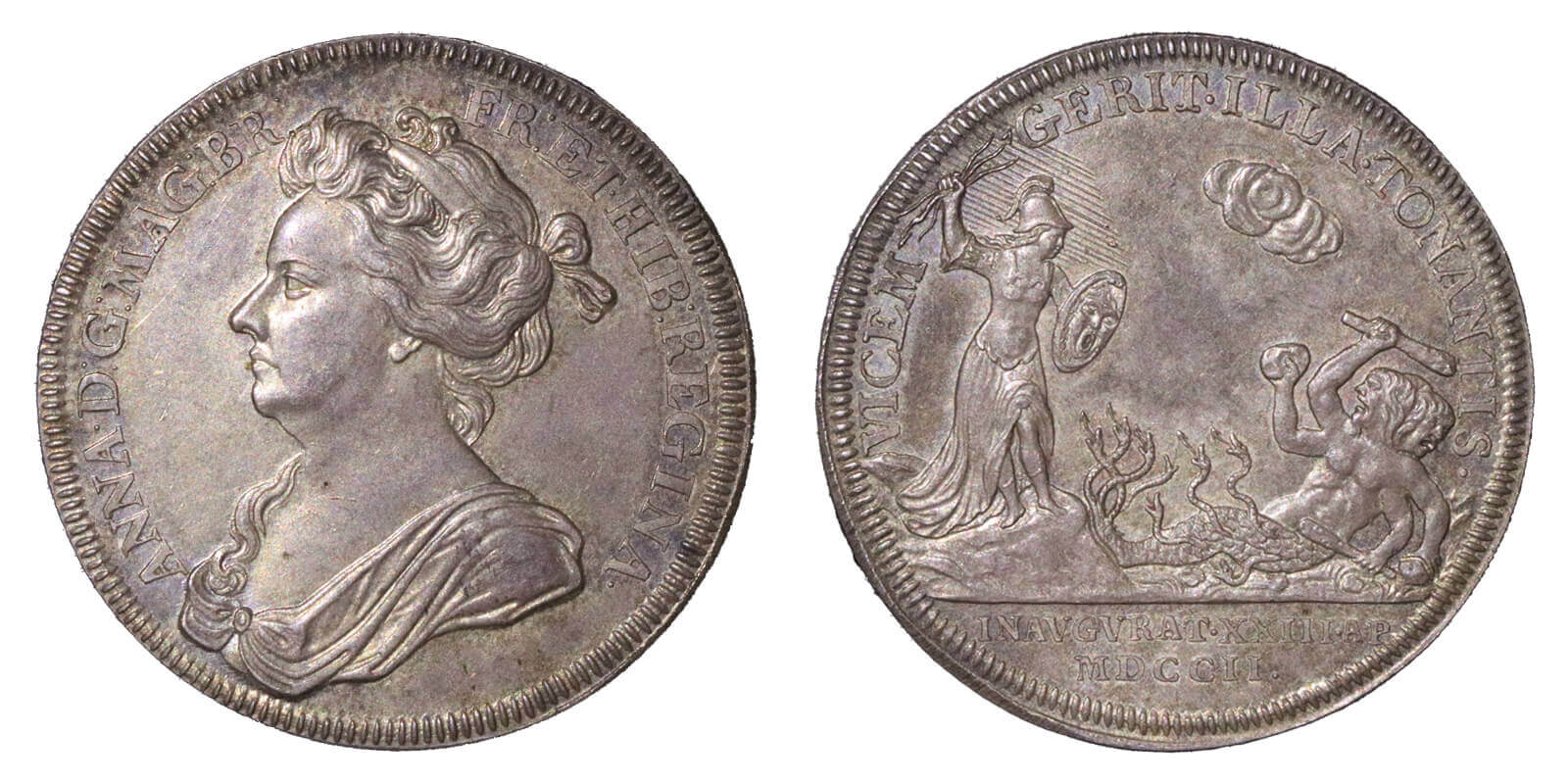
George I
The reverse of George I’s coronation medal features no inscription, perhaps understandable for a king who could understand very little of the English language, and who was largely unfamiliar with the country and its people, having lived in and ruled over the Electorate of Hanover prior to his accession.
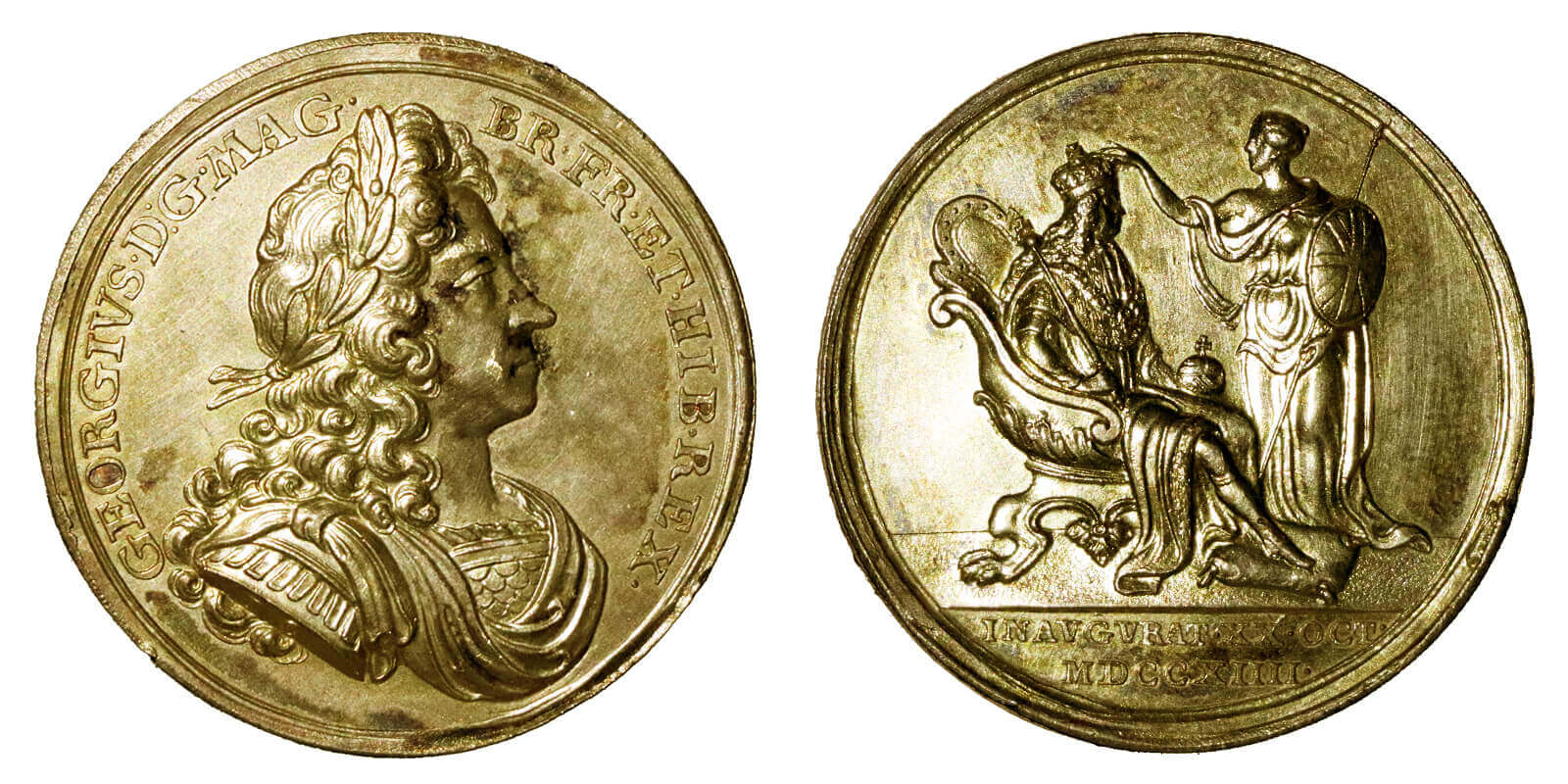
George II
The George II coronation medal features a similar reverse design to that of his father, again depicting the king being crowned by Britannia, adding an inscription which translates as ‘by a willing people’. George’s medal was prepared with even greater haste than that of Anne’s: on 8 August 1727 the Master of the Mint was ordered by the Privy Council to supply designs for inspection on 11 August. On 12 August, a design was approved.
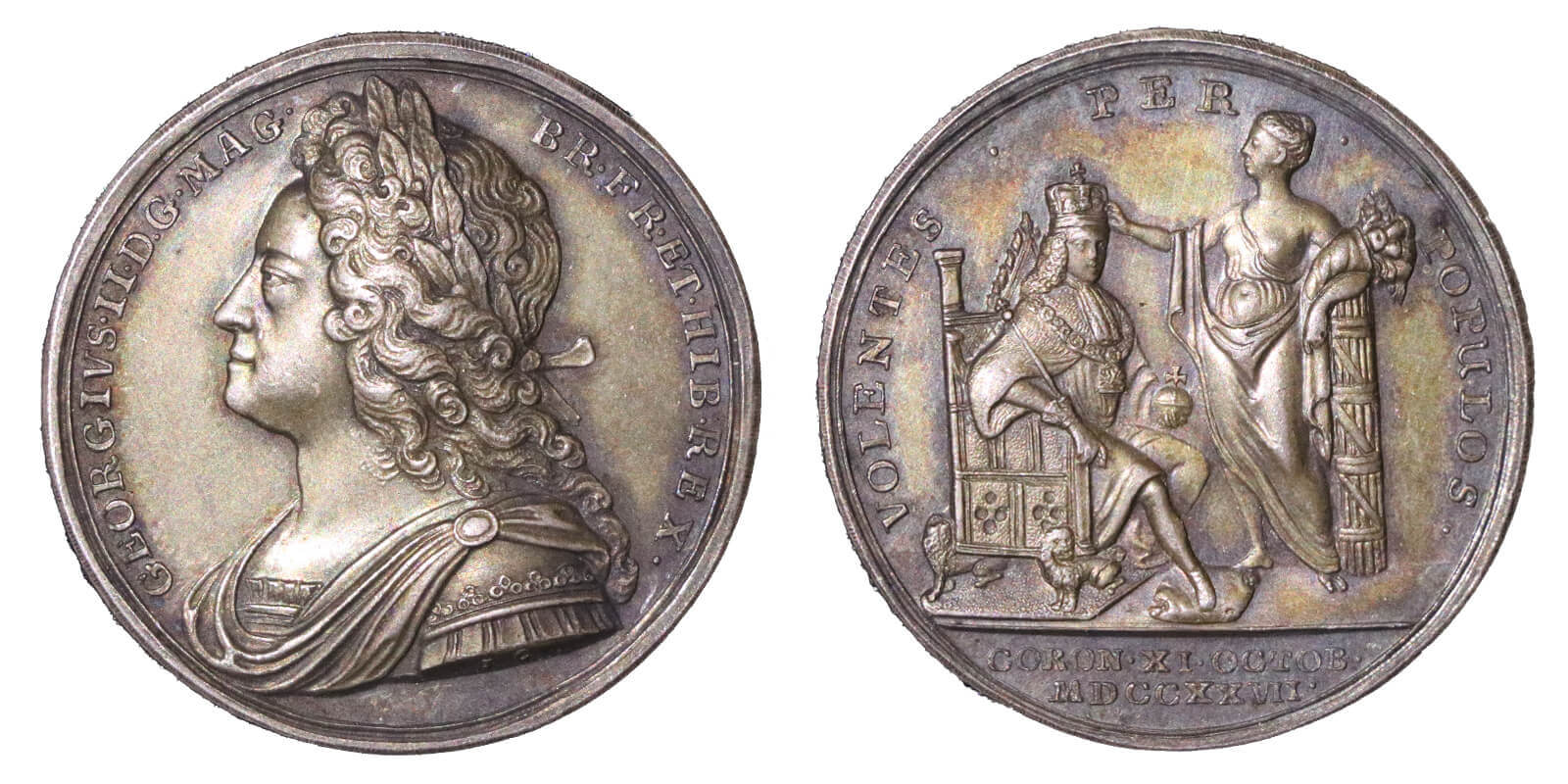
George III
The production of this medal was remarkable, as the design submitted by the Mint, prepared by the chief engraver John Sigismund Tanner, was rejected by the Committee of the Privy Council. Following the rejection of further revisions, the King directly appointed Lorenz Natter, a German native and the chief engraver of the Utrecht Mint, to prepare designs instead.
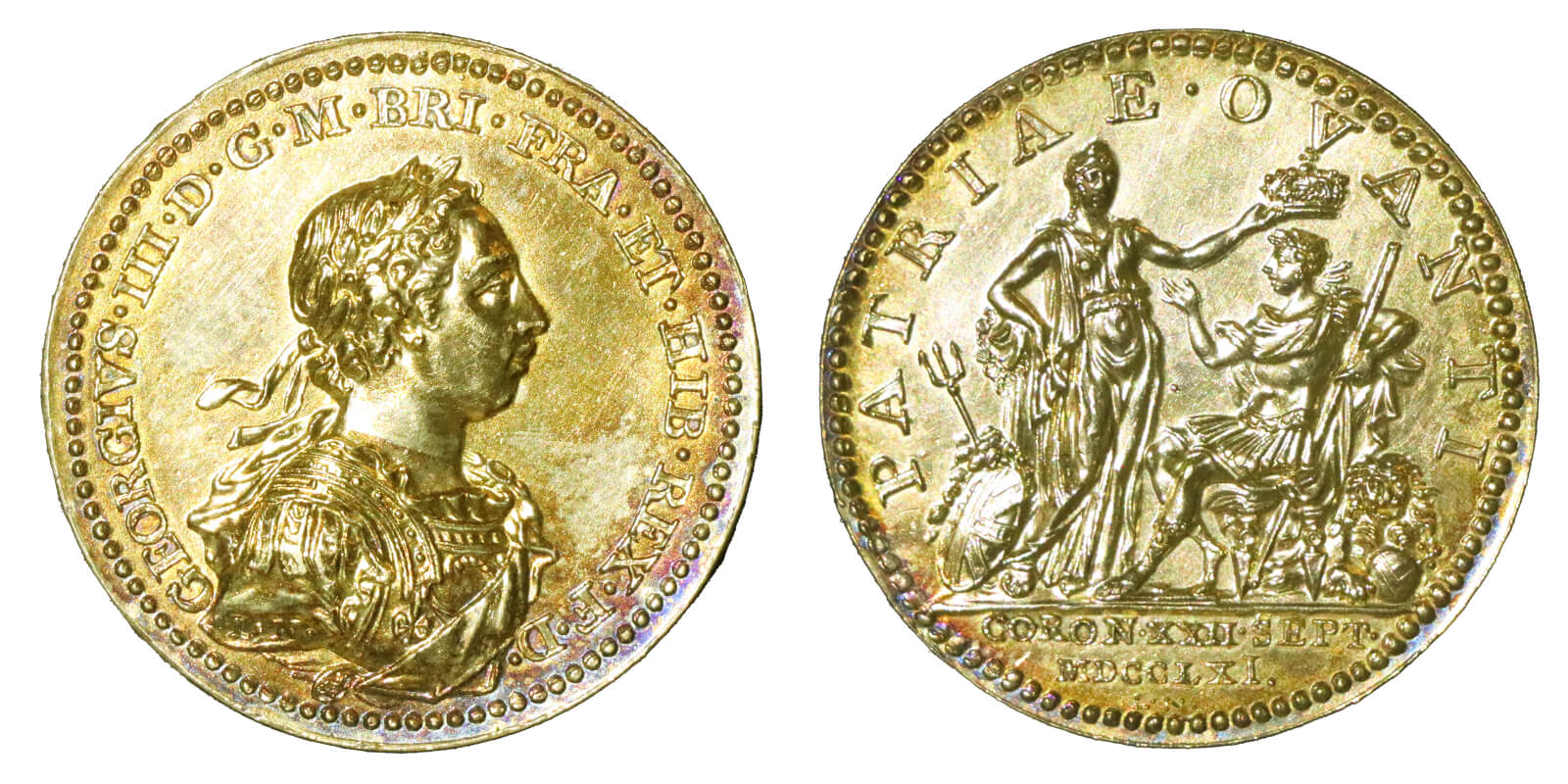
George IV (styled on the medal as George IIII)
The coronation medal of George IV was the work of Benedetto Pistrucci and features a portrait in much higher relief than was usual for coronation medals. The reverse is intricately detailed, and Pistrucci’s own description highlights the many figures in this scene as the King being crowned by Peace, a winged angel, while three women in classical robes swear allegiance, representative of England, Scotland, and Ireland.
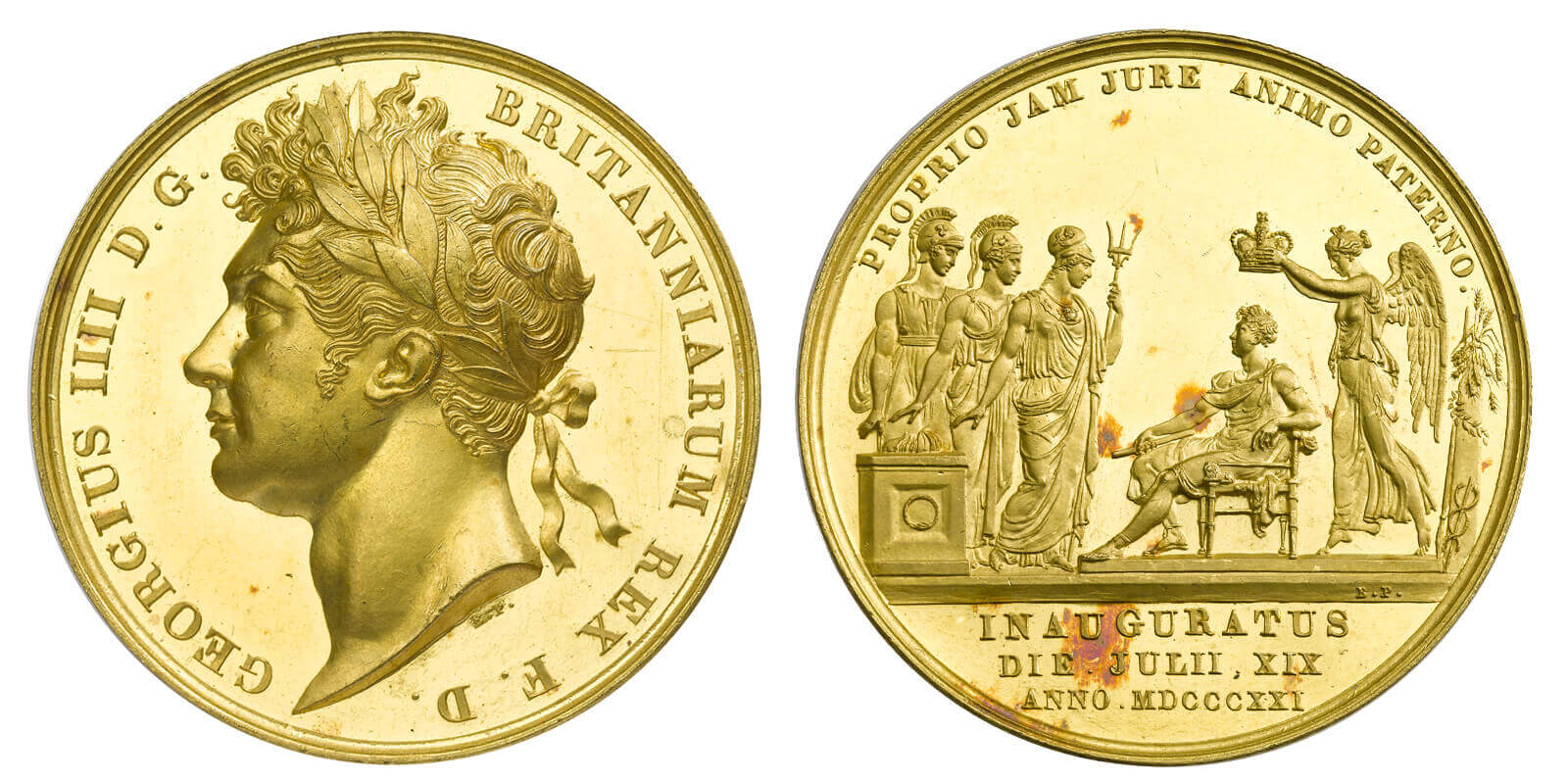
William IV
The coronation medal of William IV features several unusual departures from prior tradition. The obverse inscription is given in plain English: WILLIAM THE FOURTH CROWNED SEP 8 1831. The reverse is that of Queen Adelaide, resulting for the first time in a single medal for the sovereign and consort.
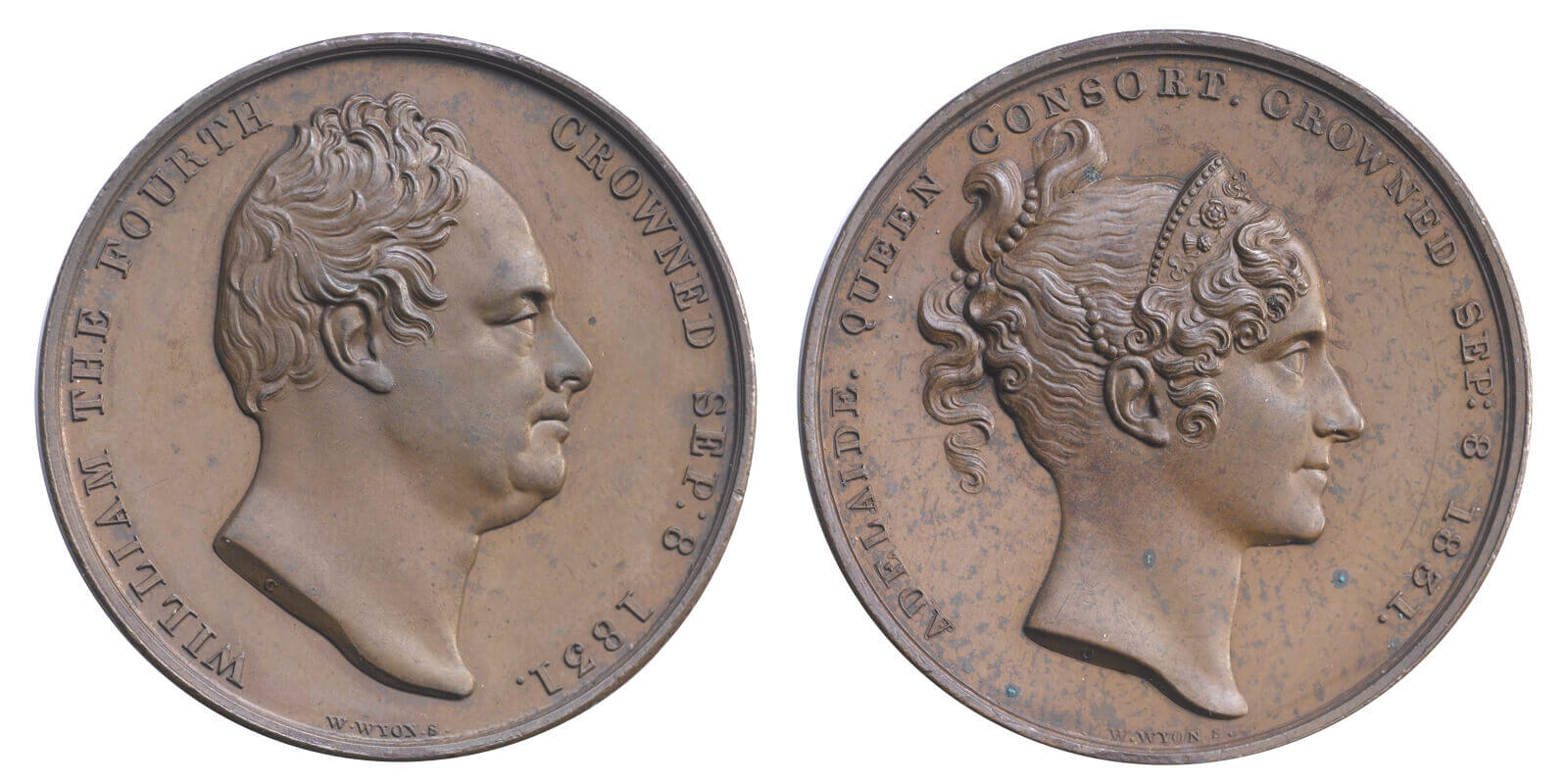
Victoria
Both Benedetto Pistrucci and William Wyon claimed the privilege of designing Victoria’s coronation medal, but the task was awarded to Pistrucci. The reverse design draws upon earlier coronation medals, featuring the lion behind the throne from that of George III, and the three ladies from that of George IV.
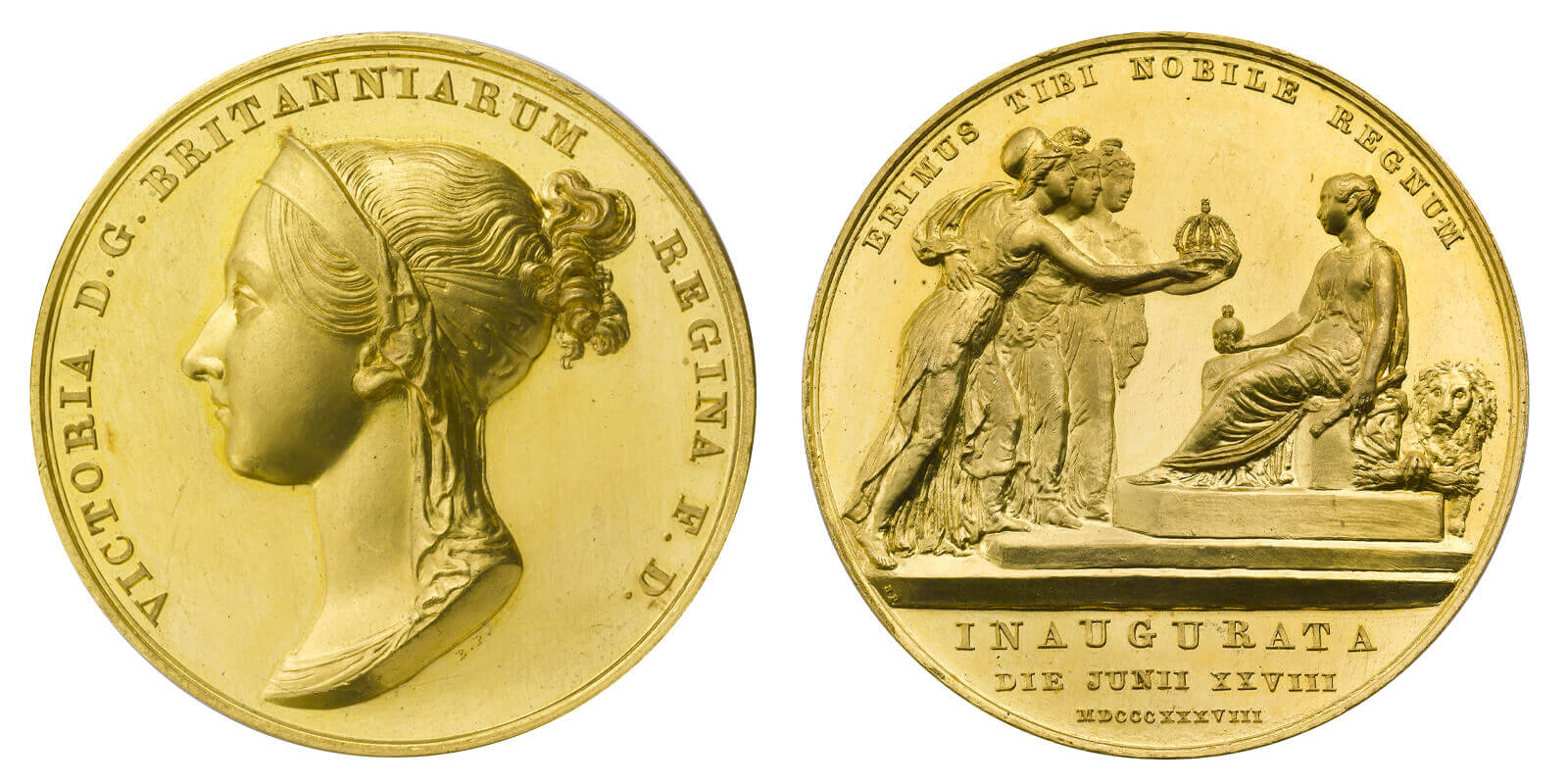
Edward VII
Edward VII’s coronation medal was the work of de Saulles, featuring clearly the orders of chivalry and coronation robes. Edward VII is the first king with a beard on coronation medals since that of James I. The inscription originally stated EDWARD VII CROWNED 26 JUNE 1902, though the coronation was pushed back to 9 August following the King’s illness.
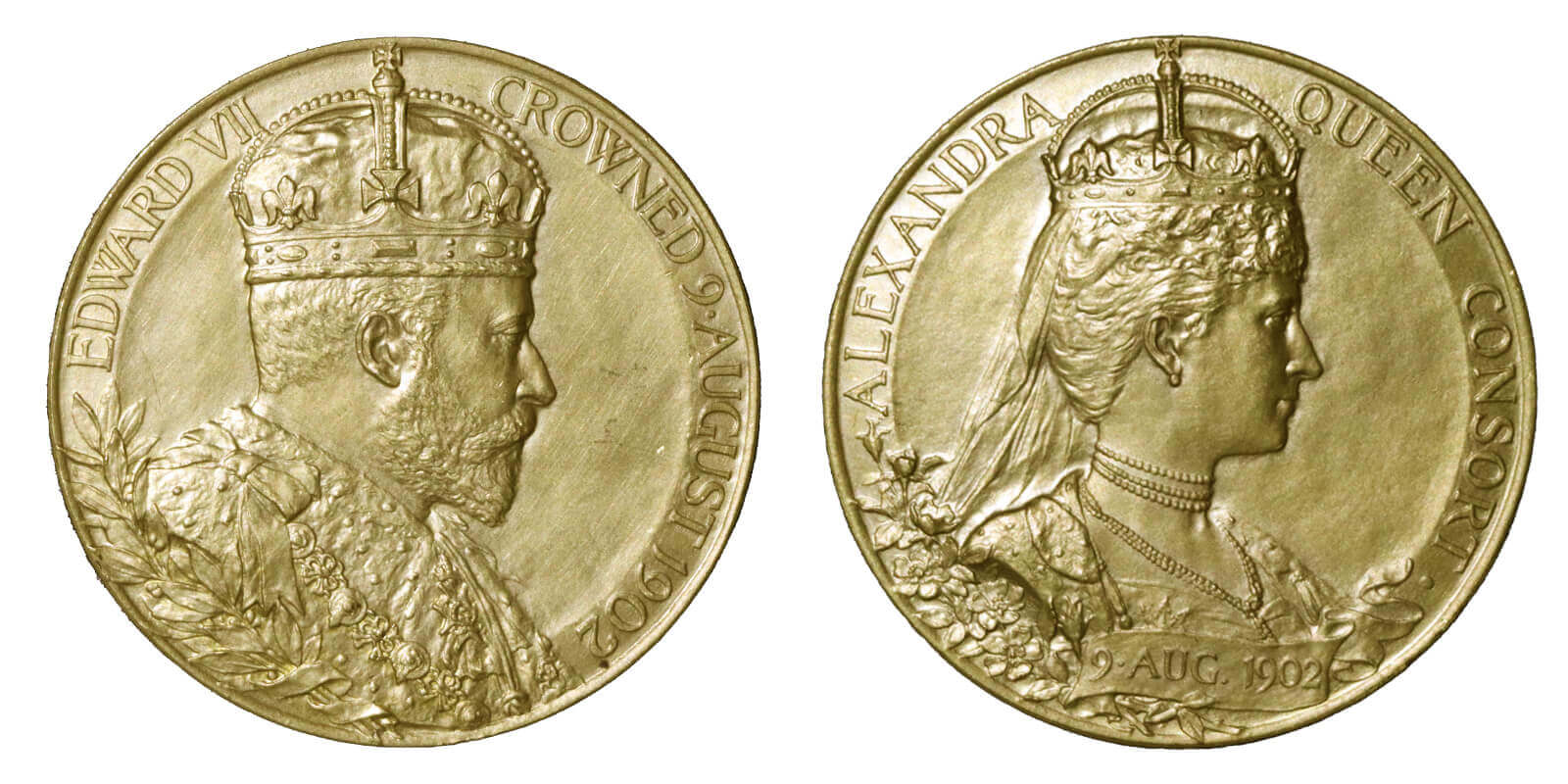
George V
The coronation medal of George V, following those that preceded it, was struck in two sizes of gold and silver specimens, as well as a bronze specimen. Notably, far fewer medals of George V were struck as compared to those of Edward VII. The design was the work of Sir Bertram Mackennal.
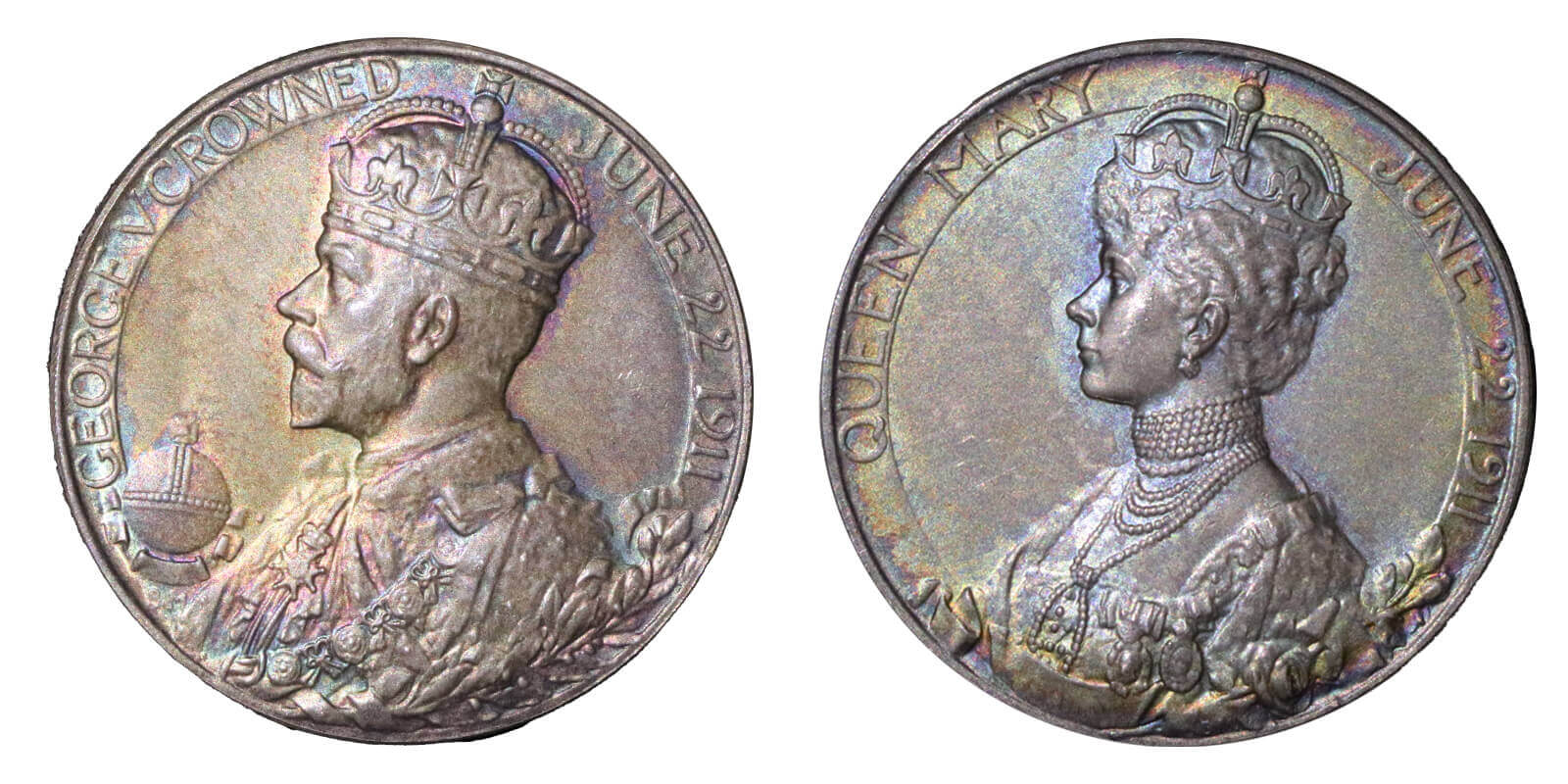
George VI
This coronation medal was the work of Percy Metcalfe, featuring a lower relief portrait of a clean-shaven and youthful king.
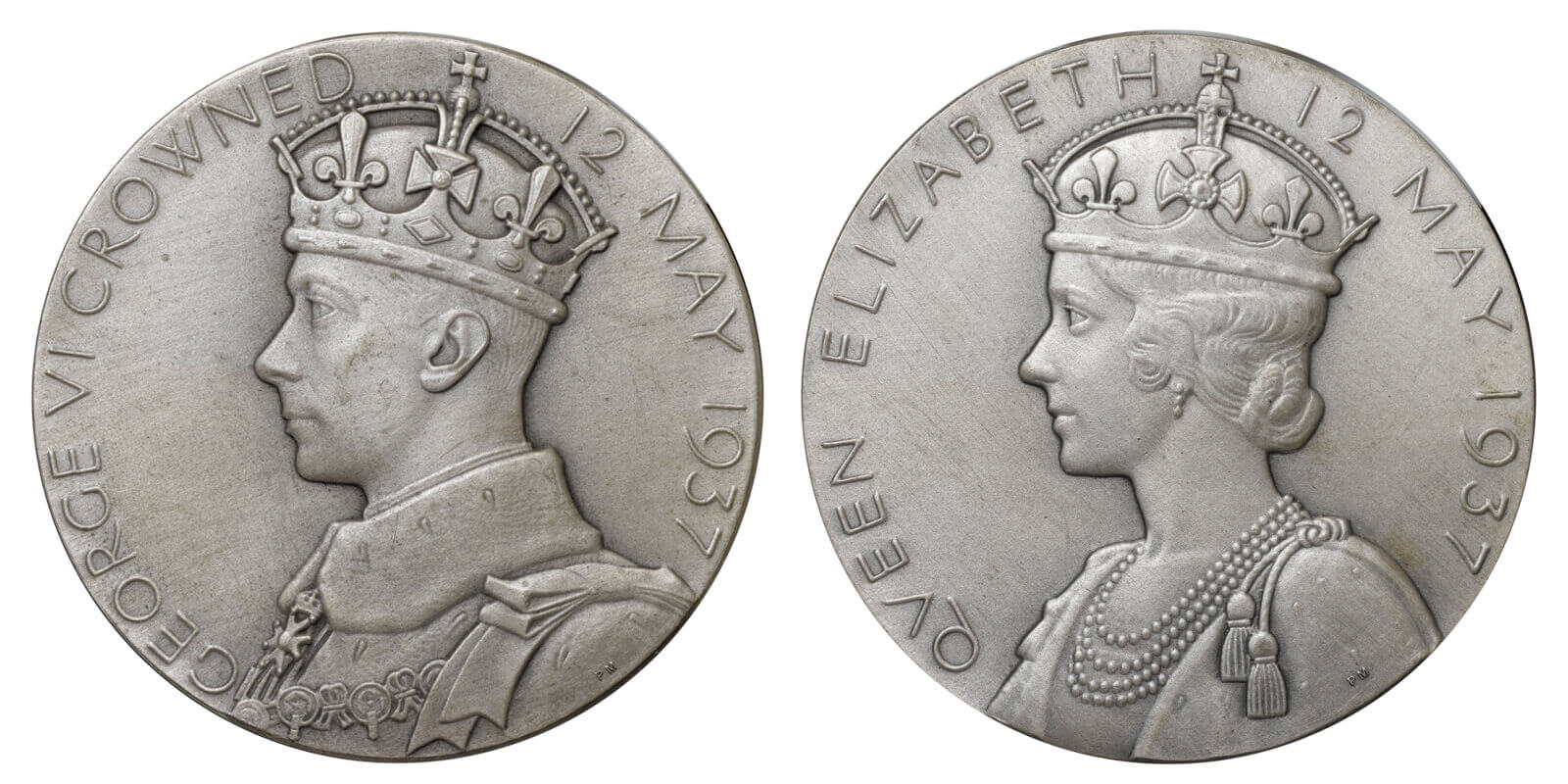
Elizabeth II
Generally, coronation medals bear no inscription around their edge, as they are awarded unnamed, but 37 of Queen Elizabeth’s medals were, by Her Majesty’s special command, engraved with the words MOUNT EVEREST EXHIBITION to commemorate the ascent of Mount Everest on 29 May 1953, news of which reached London on the morning of the coronation. These medals were awarded to members of the Expedition and the Sherpa porters.
